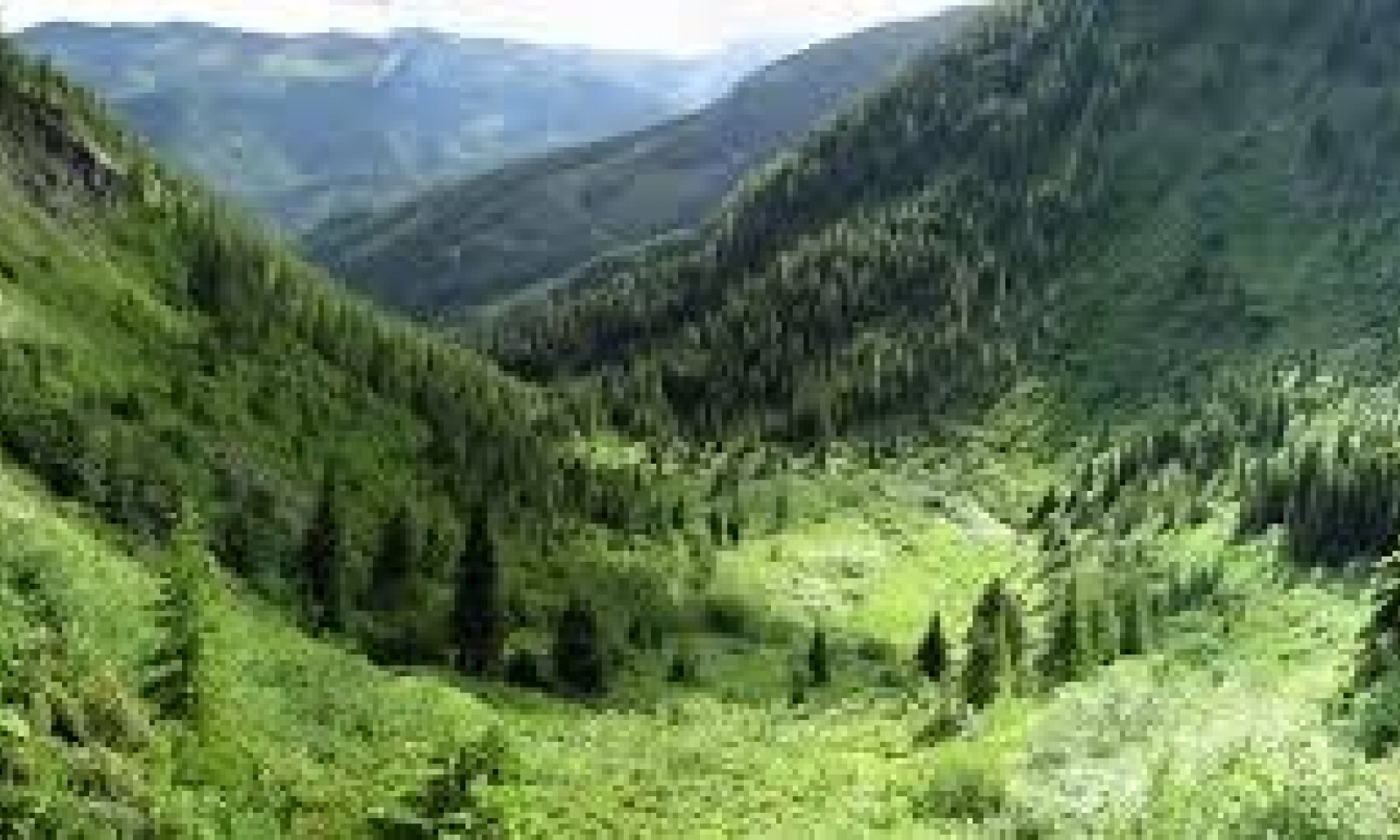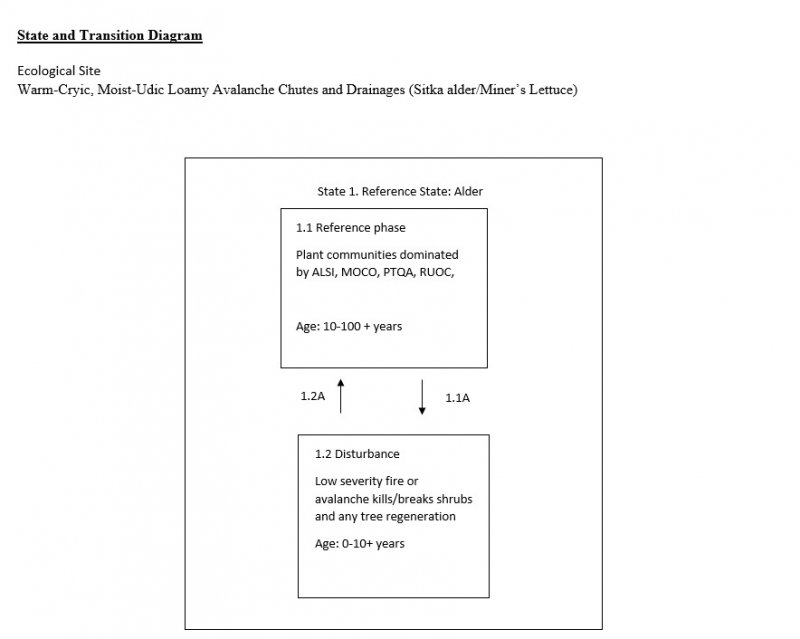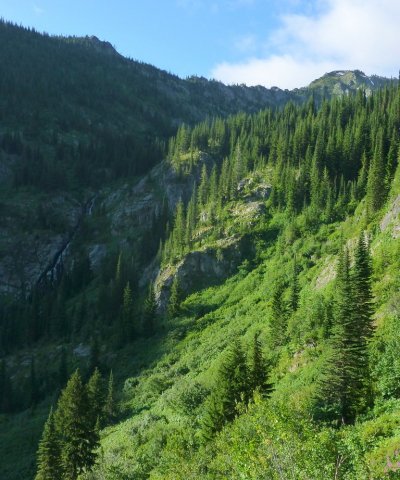

Natural Resources
Conservation Service
Ecological site F043AY580ID
Avalanche Chutes 30-45" PZ Cryic Clearwater Mountains
Last updated: 4/09/2025
Accessed: 12/19/2025
General information
Provisional. A provisional ecological site description has undergone quality control and quality assurance review. It contains a working state and transition model and enough information to identify the ecological site.
MLRA notes
Major Land Resource Area (MLRA): 043A–Northern Rocky Mountains
Major Land Resource Area (MLRA): 043A–Northern Rocky Mountains
Description of MLRAs can be found in: United States Department of Agriculture, Natural Resources Conservation Service. 2006. Land Resource Regions and Major Land Resource Areas of the United States, the Caribbean, and the Pacific Basin. U.S. Department of Agriculture Handbook 296.
Available electronically at: http://www.nrcs.usda.gov/wps/portal/nrcs/detail/soils/ref/?cid=nrcs142p2_053624#handbook
LRU notes
Modal LRU – 43A10 - Clearwater Mountains
This LRU is composed predominantly of mid and high elevation valley walls, mountain slopes and ridges. The soils tend to be loamy andisols and inceptisols with ashy surfaces. Residuum and colluvium from metamorphics, and granitics are the dominant parent materials. Soil climate is a cryic or frigid temperature regime and udic moisture regime with average annual precipitation around 1300 mm (51 inches).
Others where occurring – 43A11 Bitterroot Metasedimentary Zone
Classification relationships
Relationship to Other Established Classifications:
United States National Vegetation Classification (2008) – A3371 Western Alder Wet Shrubland Alliance, CEGL001158 Alder Avalanche Chute Wet Shrubland.
Washington Natural Heritage Program. Ecosystems of Washington State, A Guide to Identification, Rocchio and Crawford, 2015 –
Northern Rocky Mountain Avalanche Chute Shrubland
Description of Ecoregions of the United States, USFS PN # 1391, 1995 - M333 Northern Rocky Mt. Forest-Steppe-Coniferous Forest-Alpine Meadow Province
This ecological site includes or occurs near the following USDA Forest Service Plant Associations: ALSI/MOCO (Forest Habitat Types of N. Idaho, A Second Approximation, USFS Revised 1991).
Ecological site concept
Ecological Site Concept:
These sites are generally steep, linear features in concave portions of the landscape. Pure stands of Alnus sinuata and mosaics of A. sinuata with conifers and other shrub species occur throughout northern Idaho. Shrub species associated with these communities are Acer glabrum, Ribes lacustre, Salix spp., Sambucus spp., Sorbus spp., and Menziesia ferruginea. Herbaceous species are usually shade tolerant and moisture requiring such as: Asarum caudatum, Athyrium filix-femina, Circaea alpina, Clintonia uniflora, Dryopteris austriaca, Montia cordifolia, Montia sibirica, Pteridium aquilinum, Senecio triangularis, Trautvetteria caroliniensis, Valeriana sitchensis, and Veratrum viride. The only tree species regularly associated with pure Alnus stands is Picea engelmannii, which seldom develops beyond the seedling or small sapling stage. Small islands of conifers do establish and grow exceptionally well inside some Alnus stands, but these are actually islands of different soil conditions in an otherwise homogeneous habitat. Soils are loamy to sandy with thick (>7 inches) volcanic ash mantles. Organic matter content of the surface is high and available water capacity is moderate to high. While water tables are usually > 30 inches below the surface, the sites are often moist due to run-in and slow snow melt. Soil pH is often 1 pH unit lower than surrounding forested sites. While A. sinuata has been considered a seral species, these sites appear to be an edaphic climax similar to the bracken fern glades of the Grand Fir Mosaic.
Table 1. Dominant plant species
| Tree |
(1) Picea engelmannii |
|---|---|
| Shrub |
(1) Alnus viridis ssp. sinuata |
| Herbaceous |
(1) Claytonia cordifolia |
Click on box and path labels to scroll to the respective text.



